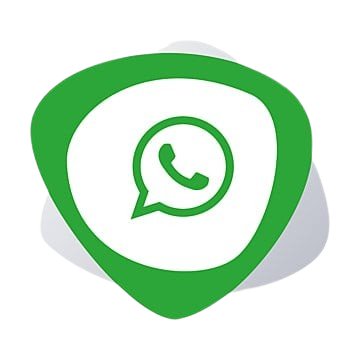
A Comprehensive Guide to Enhancing Your Digital Presence
We are living in a Digitalization era so every business must learn how to create good types of Digital Content that can make interest of your audience, and somehow they become part of your customers. Competition just keeps getting steeper, to stay seen you need to keep producing a lot of good stuff. In this review, we will examine the eight types of online content that can benefit your online reputation and how to create it.
1. Blog Posts
Though old, blogging remains one of the most efficient ways to share information with your audience and improve your website SEO. It provides you with the chance to respond to Global Questions along some are keeping it simple (if people frequently ask how certain things work so share about it). Good articles can be used to show that you are an expert in your field, and thus gain the trust of your target market.
How to Create Blog Posts:
Begin with keyword research to make sure you are writing about what your audience is looking for. Provide the most relevant terms (you can use Google Keyword Planner, SEMrush, or Ahref) After you choose your topic, create an outline to help you ensure that your introduction flows into the body paragraphs and then concludes. Add to that but try and keep writing in a conversational style: internal links and external links where they help understand your post deeper and write better for SEO.
Negatives of your Blog Boredom can be a result of visual elements such as images, infographics, and videos in the blog. At the end of your post, be sure to cap everything off with a call-to-action (CTA) for visitors to leave comments, pass it along, or entice them to take away more information about the services you offer.
2. Infographics
Infographics is the process of merging basic visuals with brief information to relatably explain tough ideas quickly. These are ideal for translating data, processes, or statistics into easily digestible graphics. It is these same reasons that also make infographics the perfect vehicle to enhance your brand across social media with shareable content.
How to Create Infographics:
The first thing you will need is to prepare all the data and stats, that you intend to send along. Next, you want to create an outline of your content so that it can be structured logically. Even if you are not a graphic designer, but with tools like Canava, Piktochart, or Venngage; You can design infographics as professional social media. Use just one color scheme — the one of your brand and do not overload an infographic with data.
3. Videos
Today, video is one of the most popular types of media out there as it can grab both a person’s visual and emotional attention. Branding can make use of video content for several reasons: product demos, tutorials, behind-the-scenes, and even customer testimonials.
How to Create Videos:
First, identify your video purpose and target audience. Structure your script to make your video short and compelling. For a video to look professional, it needs to be properly lit, and sound clear and the camera should not jiggle around too much. Use tools such as Animoto or InVideo, if you are not copied with video production they have ready-made templates. Make sure to optimize your video title, description, and tags for SEO on avenues such as YouTube.
4. Podcasts
With direct listening content in the form of podcasts, they can have some very personal conversations with their listeners. Great for longer conversations, interviews, or narrative pieces Podcasts, these days one of the most popular mediums folks use to listen to their favorite podcasts on the go using mobile devices.
How to Create Podcasts:
This is where you would need to make sure you have your podcast topic or theme aligned with what your target market will want. With a clear vision, buy an external microphone and software like Audacity or GarageBand. Prepare a rough script or an outline ahead of time that can keep the talk going but spontaneously allow it as well. Podcasts require consistency in the way they are published develop an editorial calendar that helps you to release new episodes within the deadline.
5. Ebooks
Ebooks are high-value long-form digital products that attract leads who want to learn more about a topic. They make great lead magnets because people will usually happily give their email to get this kind of more in-depth content.
How to Create Ebooks:
A book can be written by anyone and published but it is useless if you have a bad topic. Step 1 Good Topic Most Important Given an outline, chapter/section of your content. You should enlist the help of something like Scrivener, Canva, or Adobe InDesign for this stage. Make sure you have a good front cover and then fill the rest of it with images to hold people’s attention. End by including a call to action, whether it is to subscribe to our newsletter or try our product.
6. Webinars
A good example of this is webinars — which are simply live or pre-recorded online seminars that permit you to interact in real-time. Educational to teach your audience, Product demos or Q&A sessions, then webinars can be a useful way to build authority and trust.
How to Create Webinars:
Now select a platform like Zoom, WebinarJam, or GoToWebinar. Publicize your webinar well in advance on social media or by email campaign to invite people to participate. Use an agenda or slideshow to maintain the structure of the webinar and be sure you have time built in for interactivity between your audience with polls, chat, or a Q&A session. Send a recording (and any follow-up resources) to all attendees after the webinar.
7. Social Media Posts
It should come as no surprise given social media is one of the easiest outlets for pushing out content. Short text updates through eye-catching visuals or videos, social media posts can customize each post to the platform, utilizing Facebook, InstagramTwitter, and LinkedIn.
How to Create Social Media Posts:
Since each social media platform has a different style of content and audience, we must create posts that are specially designed for them. Craft Sexy, Visual Posts via Canva And/or Adobe Spark Use popular hashtags, and make sure to ask people to get involved with your posts. Tl:dr Short and snappy, focus on which posts are getting traction and why using your analytics.
8. Email Newsletters
Email newsletters are a more intimate and personalized way to reach your audience with useful content, news, promotions, etc. Through proper email marketing, you can also take care of nurturing your leads and helping the audience stay abreast with what your brand has been up to.
How to Create Email Newsletters:
An email marketing platform (Mailchimp, ConvertKit, Constant Contact…) Personalize what you send according to how your various audience segments behaved and expressed their preferences in the past. Keep your subject line strong to get those open and the content within valuable and relevant. Use visuals and make sure your CTA is concise, whether it is to read a recent blog post attend an event, or buy a product.
Final Thoughts
To create useful Digital Content, consider your audience and be as strategic as possible to meet their requirements. Regardless of whether you are writing blog posts, infographic design, or launching podcasts contributing different types of content will increase the reach and accomplishments of your brand.






